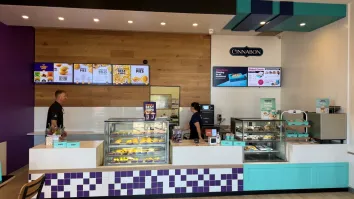What you must not forget when dealing with Rent, Wages
By Steve HansenWhen asked the question on what are some of the hottest topics in QSR small businesses, one can always stop and ponder, as there are many areas that become the latest hot topic, however there seems to be some basic ground rules that can be forgotten.
When looking at many businesses there seems to be a lack of discipline to work to a basic weekly budget.
If you asked most small business owners, do they have a weekly budget for both sales and expenses and an expected profit, they generally say no our accountant does that, sometimes quarterly, 6 monthly or even yearly.
In many Franchise systems Franchisors will provide spread sheets from which Franchisees can determine a weekly profit given that the expense base has been calculated over long periods of time, which enables averages to be used, and updated say quarterly. The reality is that still most small business operators are focused on delivering their product or service to their customer base. So the function of getting this work done needs to be handled by an outside source, weekly.
The real starting point for any small business is RENT, and over the past 20 years, square metre rates have been over inflated by landlords to support, their borrowings for the next big venture, with discounts to the major shopping centres, and the real costs being bourne by the small business operator.
Once a gross rent has been agreed, then one needs to divide the annual cost by the percentage that it is considered that the business should pay in order to make a profit and be sustainable for the future, not the percentage that the landlords agent suggest that that type of business can afford in that particular centre.
For example McDonald’s would not consider a location, without a demographic study to show that firstly their customer base is in the area or will frequent the centre. They may use say 5% as the percentage of gross turnover, that they are prepared to pay in rent, therefore if their rental base is $150K, then they know that the business has to turnover $3m per year in order to make a profit and be sustainable for the longer term.
There are many small businesses in shopping centres paying far more rent than the business can afford and consequently many owners would be battling to make basic wages. Of course it has to be assumed that the business owners are providing the quality product and service that would be expected of a brand.
The importance of knowing the above information and then actually using the information to calculate where the business is at weekly is of utmost importance, because those that are not aware are taking decisions based on most likely false information. It could be fair to say that many small businesses operate and make decisions on what the last bank statement said and yet, they have not taken in to account GST, suppliers, all other expenses, to see if there is actually any left to be used either personally or to enhance the business.
The other major area is always WAGES, again if rosters are not set to cover the appropriate hours required to effectively man the business, and if the dollar value of those wages is not calculated to a percentage of turnover then the reality is that the business will most likely be losing money.
Some businesses are well located and are successful without having these disciplines in place, but they are very few.
Like all decisions, those made emotionally as opposed to those made from good data and calculations usually cause grief in the longer term.



























